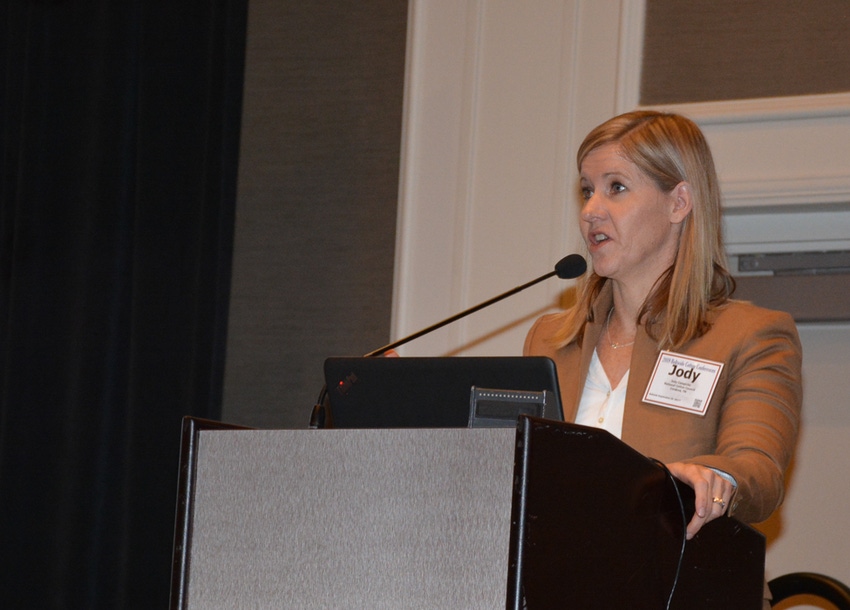
Almost as common as the word “cotton” at the 2019 Beltwide Cotton Conferences in New Orleans, La., was the phrase, “because of the government shutdown,” often heard when presentations by government personnel had to be cancelled and, in some cases, when the most current data could not be used to provide an update.
Dr. Jody Campiche, National Cotton Council vice president, economics and policy analysis, gave an economic overview about topics such as changes in the farm bill, the Market Facilitation Program and trade at the Cotton Economics and Marketing Conference. But when it came to the latest estimates for the seed cotton program, she had to use December’s data rather than January’s to calculate estimates.
Based on the December WASDE numbers, the seed cotton average price would be about 35.3 cents, with potential PLC payments ranging from $25 to $35 per acre, depending on a farm’s PLC payment yield, says Campiche. The ARC payments range from $40 to $90 per acre in the Southwest and Southeast counties of the U.S. where they were hit with drought and hurricanes.
“The price of 35.3 cents is based on the USDA numbers published in December. The January numbers were supposed to come out early next week, but now they are going to be delayed because of the government shutdown,” Campiche explains. “As soon as those come out, I’m expecting the 2018/19 lint price estimates will be lower and I think the cotton seed price will be higher. So that current price, the seed cotton prices based off the lint price is the midpoint of the WASD, which was 74 cents for the lint price and the cotton seed price, $141 a ton.
“Again, I think that’s going to change a little bit. And what will likely happen, it’s going to result in a lower 2018/19 seed cotton marketing year average price, which would mean higher PLC payments.”
The numbers that go into marketing the average price calculation for lint are based off of a marketing year from August through the end of July. “Right now, we only have the data for August, September and October. So, even though the WASDE estimates the numbers out further than they did in the December estimates, if you look at the NASS data, where this comes from, those data are only published through October,” Campiche explains.
Generally, the November number is published at the end of December, she says, but because of the government shutdown, it has not been published either. “A lot of people ask questions about this marketing average price and what it is now and what the payment is going to be. But we’ve got a long way to go before we have very much data that’s going to go into calculating that price.
“We know the prices have come down in the last month or so, but we have a lot of months remaining in the marketing year and the heaviest months where most of the cotton lint is marketed will go into that determination.”
Campiche encouraged attendees interested in keeping up with those estimates, to log onto the National Cotton Council website, http://www.cotton.org/econ/govprograms/seed-cotton-program.cfm. Under “Estimating 2018/19 Seed Cotton Price,” Campiche provides monthly updates on NASS lint and cotton seed prices along with a seed cotton marketing year average price estimate. Users will also find a seed cotton payment matrix from PLC.
FARM BILL
Campiche also addressed the packed room about the 2018 farm bill. While the new law includes few changes for cotton, Campiche reiterated the value of having the 2018 seed cotton program already in place.
One item that has changed, is a new ARC and PLC election, starting with the 2019 crop, which will be for 2019/20. “Producers with seed cotton made the elections in 2018 for the 2018 seed cotton program. We had some producers choose to go into ARC County instead of PLC. Producers did that because they were thinking they’ll get another decision in 2019 if they want to get PLC.”
And that election option is for all crops or commodities, she says, not only for seed cotton. “Again, I’m expecting more of a shift to PLC for some of the crops that were in ARC before, not so much for soybeans just because of changes in the reference prices, but particularly for corn, I think we’ll see a shift from ARC to PLC.”
Starting with the 2021 crop, growers will be allowed an annual election. “Unlike this last one where you made the decision and were stuck with it for the life of the farm bill, now, we’ll make that decision for the first two years of the farm bill and then get to select annually in 2021 and 2022.”

Dr. Yangxuan Liu, University of Georgia, visits at the Beltwide Cotton Economics and Marketing Conference with cotton market experts Dr. O.A. Cleveland and Jarral Neeper.
But, she warns, it may not be as easy of a decision as it was in 2018. “This year was a little bit different with droughts and hurricanes and when the signups started, producers already knew, after the fact, what had happened in those counties. So, it made choosing ARC a little bit easier.”
So why does that matter, Campiche asks the crowd? “Because whenever you look at the safety net for ARC versus PLC, you’ll see that PLC has a much higher maximum payment than ARC. So, over time, it provides a better safety net. But in certain circumstances, the prices are higher and you know that counties have had significant crop losses. Then again, ARC is a good option.
But going into this next farm bill, it is likely in 2021 the annual election deadline will occur earlier in the year before producers know what is going to happen with that crop,” says Campiche.
About the Author(s)
You May Also Like






